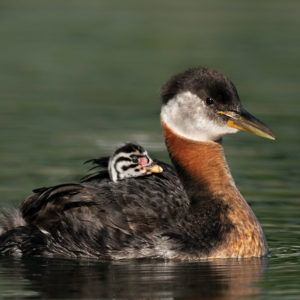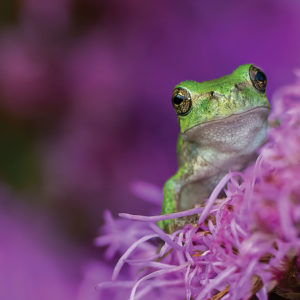Meet the resourceful red fox
A popular subject for urban and rural nature photographers, the red fox is a visually vibrant species with some unique characteristics that set them apart from the rest of their foxy family members. Found around the world, red foxes are resourceful and intelligent with a remarkable ability to adapt to a variety of environments and ecosystems. In Canada, they can be spotted anywhere from forests and mountains to suburbs and farms.
Foxes are part of the Canidae family, which also includes dogs and wolves. But while the Canidae family is known for traveling in packs, foxes tend to keep to themselves. Foxes mate during the winter and the female fox can give birth to a group of 2 to 12 pups in the spring. While the pups are being raised, the family will live as a group—this is the only time you’re likely to see a group of foxes.
When the fox pups are born their coat can vary from gold, reddish-brown, silver, or even black! Pups are only capable of opening their eyes nine days after their birth and they usually stay with their parents for a few months through the summer. Once the fall comes around, pups move out on their own and begin their journey.
The fox and the…cat?
Although clearly related to dogs, red foxes actually share a few unexpected behaviours we typically associate with cats. For example, like felines, foxes are nocturnal. They have vertically oriented pupils, which gives them the ability to see and hunt in low light conditions at dawn or dusk.
They also share a similar hunting style. You’ve probably observed the way cats silently sneak up to their prey then sit silently ready to pounce. Foxes take on a similar approach when hunting, often using their stellar hearing to hone in on their prey.
Red foxes are omnivores, with their diet consisting of things like frogs, smaller mammals, birds, insects, fruits, vegetables, seeds, and even eggs. In winter, they prefer mammals such as mice that live underneath the snow. In the fall they prefer fruit, and in spring they feed off of bird eggs and earthworms.
Even though foxes are resilient and capable of adapting to new environments, they still face threats that many other species also endure. Habitat loss and climate change is a major factor that is threatening mammals across Canada. That is why we are advocating for an expansion of protected areas to ensure species like the red fox can thrive. Join us today in making nature a priority in the country’s recovery plans.



